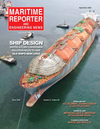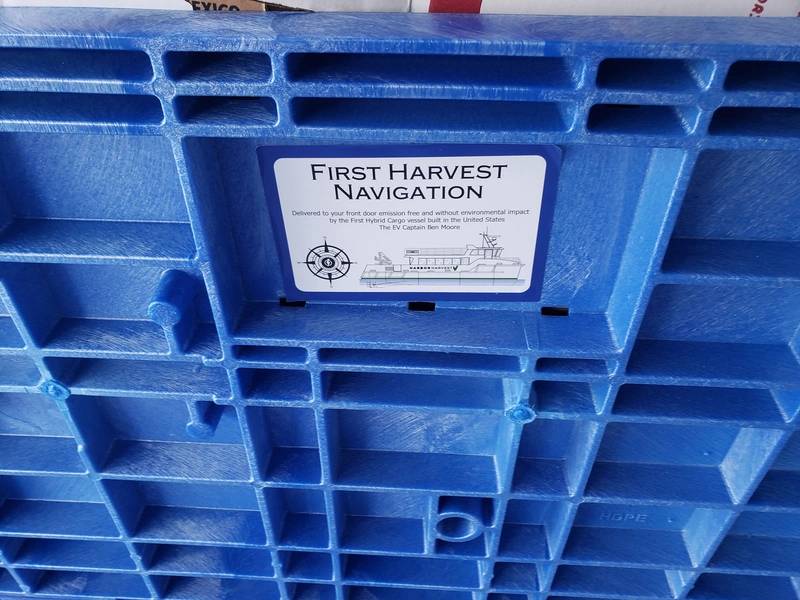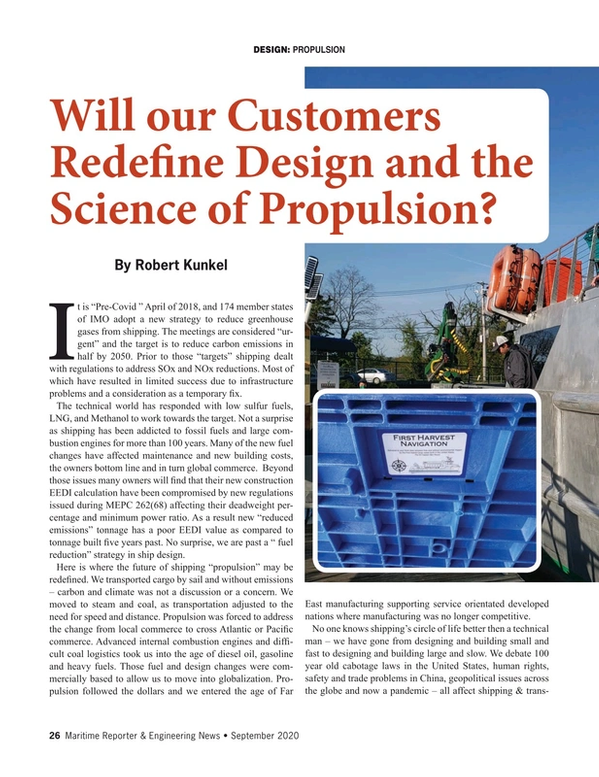
Will Customers Redefine Design and the Science of Marine Propulsion?
It is “pre-COVID ” April of 2018, and 174 member states of IMO adopt a new strategy to reduce greenhouse gases from shipping. The meetings are considered “urgent” and the target is to reduce carbon emissions in half by 2050. Prior to those “targets” shipping dealt with regulations to address SOx and NOx reductions. Most of which have resulted in limited success due to infrastructure problems and a consideration as a temporary fix.
The technical world has responded with low sulfur fuels, LNG, and methanol to work towards the target. Not a surprise as shipping has been addicted to fossil fuels and large combustion engines for over 100 years. Many of the new fuel changes have affected maintenance and new building costs, the Owners bottom line and in turn global commerce. Beyond those issues many owners will find that their new construction EEDI calculation have been compromised by new regulations issued during MEPC 262(68) affecting their deadweight percentage and minimum power ratio. As a result new “reduced emissions” tonnage has a poor EEDI value as compared to tonnage built five years past. No surprise, we are past a “ fuel reduction” strategy in ship design.
Here is where the future of shipping “propulsion” may be redefined. We transported cargo by sail and without emissions – carbon and climate was not a discussion or a concern. We moved to steam and coal, as transportation adjusted to the need for speed and distance. Propulsion was forced to address the change from local commerce to cross Atlantic or Pacific commerce. Advanced internal combustion engines and difficult coal logistics took us into the age of diesel oil, gasoline and heavy fuels. Those fuel and design changes were commercially based to allow us to move into globalization. Propulsion followed the dollars and we entered the age of Far East manufacturing supporting service orientated developed nations where manufacturing was no longer competitive.
No one knows shipping’s circle of life better then a technical man – we have gone from designing and building small and fast to designing and building large and slow. We debate 100 year old cabotage laws in the United States, human rights, safety and trade problems in China, geopolitical issues across the globe and now a pandemic – all affect shipping and transportation and with that the ship propulsion we choose. Most of these debates leave technical men scratching their heads in confusion when asked what is the future of ship design. Fast, slow, large, small, clean or dirty – local, coastal or global?
The quest for decarburization may place us again in a period of transportation reinvention. The decision maker will simply be the consumer and his or her daily interaction with social media and the speed of information. That instant gratification tends to lead to faster deliveries as we locate the service or item on Amazon and expect it on your doorstep the next afternoon. With that expectation, farming, manufacturing and processing will need to be local or “near- coastal”. Simply because distance transportation at speed will result in larger energy sources and increased GHG in a global economy – all the more difficult to meet an IMO 2050 regulation across the globe. All the more difficult to introduce new zero emission technologies.

The effort to reach zero emissions and carbon neutrality in propulsion will upset current global businesses and trade. Manufacturing nations of current exporting countries will look to relocate their factories at importing nations and reduce global trade volumes. That change can push marine propulsion closer to EV technologies and a move away from large fossil fuel combustion engines. Simply put, battery technologies, hybrid and EV marine propulsion is taking hold of ferry markets, coastal operations, offshore wind and small tank vessels operating in the ECA zones around the globe. Most if not all displaying near zero emissions and sustainability well before the 2050 IMO mandate.
Japanese chemical tanker operator Asahi Tanker has ordered two emissions-free 4,500-dwt tankers with the ship design work completed by e5 Lab Inc, a joint effort between Asahi Tanker, MOL, Mitsubishi Corp and Exeno Yamamizu Corp. The ships are powered by 3500 kWH lithium ion batteries. Asahi claimes the ships will be the world’s first emissions-free tankers, eliminating all carbon, nitrogen/sulphur oxide and particulate matter. Zero emissions.
In the United States this needs to begin with the support of local business and near coastal hybrid transportation. First Harvest Navigation & Harbor Harvest is successfully operating the first hybrid EV cargo vessel in the New England corridor carrying both passengers and refrigerated cargo. The company growth is reaching into autonomous operation with pilot programs under discussion with Sea Machine of Boston, Mass. The construction of several larger vessels supporting New York City and northern Connecticut is part of this growth. Regional waterborne transportation completed with zero emissions well before 2050.
As EV begins to dominate these smaller markets and ship sizes, the question is simple; can energy storage technology move into longer distances, higher speeds, larger ships and global trade? From our recent experiences and discussions with the builders, BAE Hybridgen, ABB and Major Oil, we believe it can.
The new consumer is informed and aware of the environmental impact of products and services they purchase. The trend shows this customer base is more likely to trust a company or corporation that is actively supporting social or environmental issues. Many “talk the talk” and market their visions. However, the truth is those corporate goals are reached in manufacturing, farming, and service industries and then is lost once the company moves into transportation. Trucks, ships, and airlines moving those products do not meet the climate change goals.
We can work to make hulls more efficient, burn bio fuels and ammonia, reduce speed and in turn reduce fuel consumption. All that said, to reach the IMO target by 2050, zero-carbon vessels must be developed well before that date and the global infrastructure must be in place to support that EV technology.
Offshore wind powering charging stations, digital technology to control the grid in an effort to support full digital electric operations and small autonomous vessels moving cargo along a waterborne highway. Science fiction? Hardly, as we have learned that the decision process and speed of which this technology change needs to take place is entrepreneurial and requires private support and action from ship owners, cargo source and finance. Government regulation and interaction will delay the process. We experienced that delay with First Harvest Navigation first hand at both federal and state levels.
From a design perspective, a transition needs to take place beginning with a move to diesel electric propulsion in larger vessel construction. The DC grid and technology with that well established propulsion process can work to move into battery support and the replacement of generator(s) with the new battery energy source. A hybrid path no different then the path the automotive industry has taken to move to full EV. The role of the financial sector is important in financing that transition. Owners and cargo sources will need to show the change is investible. Look at Space X, Tesla, Virgin and their leadership into new technology and private investment. Shipping needs to follow that lead, from local to global and away from government interference that regulates the speed of change to support political agendas.
Being carbon neutral means that your net release of CO2e into the atmosphere is zero. We need to work towards zero emission design not emission reduction. The establishment of the Emission Control Areas (ECA) was a good start of establishing control levels near the populations. Continue to develop those regions as local areas to introduce EV propulsion and transportation on both land and sea. We believe EV is the path forward and the future of propulsion design. Start small as we have seen in our projects and grow into the technology supporting larger commerce.
Read Will Customers Redefine Design and the Science of Marine Propulsion? in Pdf, Flash or Html5 edition of September 2020 Maritime Reporter
Other stories from September 2020 issue
Content
- Training Tips for Ships #16: Using Student Exam Results to Measure OUR Performance: Part 2 page: 12
- History and Overview of U.S. Cabotage Laws page: 14
- “It’s my dream job”: One-on-one with Søren Andersen, CEO, StormGeo page: 18
- Maritime History: Columbia Lighting the World; How Classification Can Make a Difference page: 22
- Will Customers Redefine Design and the Science of Marine Propulsion? page: 26
- New Lives for Old Ships: Inside Keppel O&M’s FLNG Conversion Solution page: 34
- Mitigating Underwater Noise page: 42
- Fit for Fight: Navies challenged by COVID at sea, ashore page: 44


